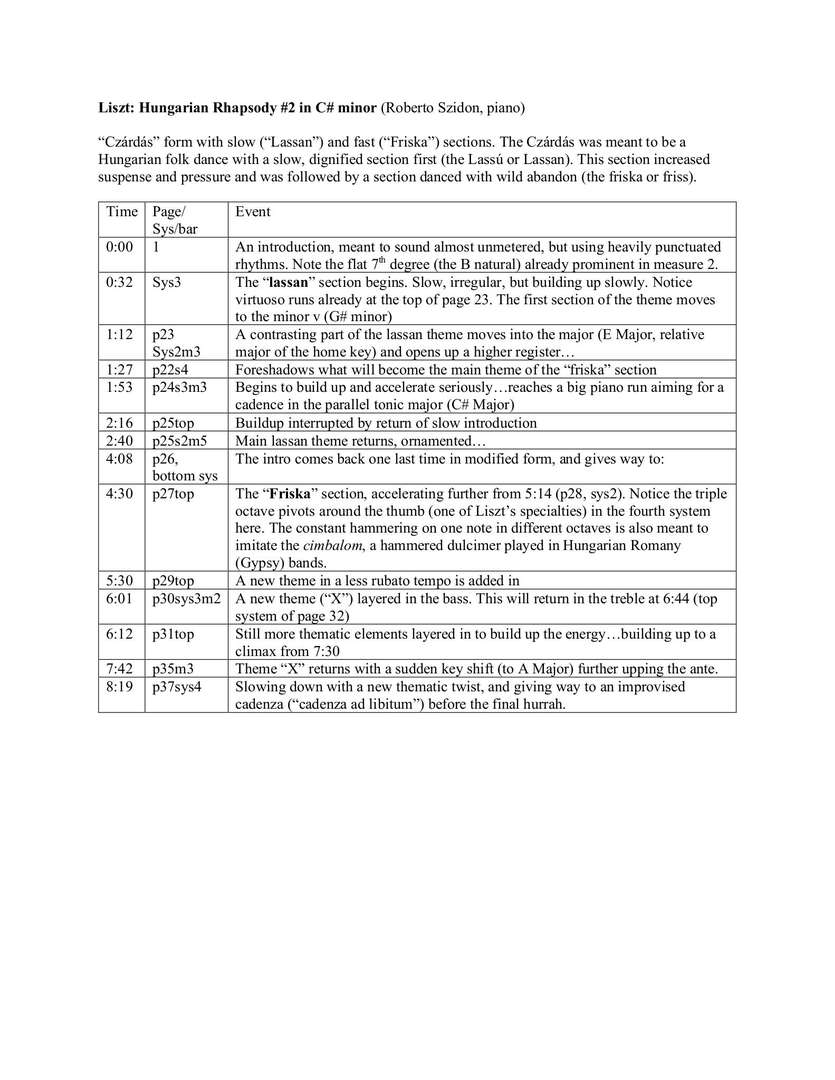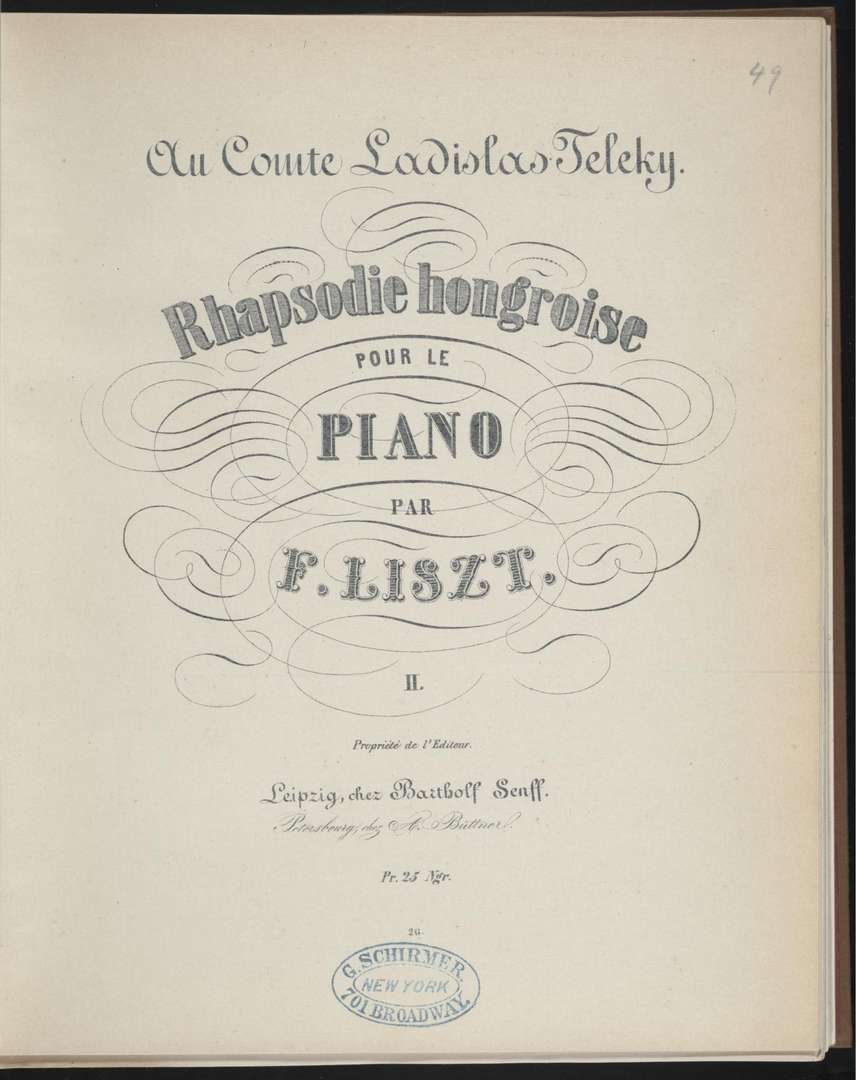Liszt finds his inspiration for new piano techniques in the acknowledged virtuosity of Romani musicians on other instruments.
Liszt’s Hungarian Rhapsody No. 2 in C# Minor and the Pianistic Style Hongrois
From dances to high art
Liszt’s famous engagement with Romani music and his writing on this subject is the topic of another essay.
Here, we can look more closely and analytically at what is arguably the most famous piece he wrote in the “Hungarian style”: the Hungarian Rhapsody No. 2 is one of the composer’s best-known pieces overall.
It follows a typical csárdás form, elaborating on the verbunkos style. The csárdás was a Hungarian folk dance with a slow, dignified section first (the lassú or lassan). This section increased suspense and pressure and was followed by a section to which a dance with intricate footwork was performed at a fast tempo (the friska or friss).
Liszt’s rhapsody was written in the late 1840s and shows the composer on the precipice between virtuosic showmanship and compositional ambition – to cite the criteria established by the German nationalists and avant-gardists of the mid-nineteenth century for “high art”.
See the Hungarian Dance Collection

Lassan
From a compositional standpoint, this type of thematic interrelation shows Liszt’s interest in the German value placed on “organic” connections between the theme and thematic transformation.
In this piece, we begin with an introduction meant to sound almost unmetered (that is, with no regular pulse) but using heavily punctuated rhythms. Note the flat 7th degree (the B natural) already prominent in the second bar of the piece, which adds an exotic or modal connotation when placed in the context of Western minor-key tonality.
Then the lassan section begins, at bar 9. It is slow and irregular and builds up gradually, although virtuoso runs begin to appear as soon as in bar 24. The first section of the theme moves to the minor V chord (G# minor). From bar 27, a contrasting part of the lassan theme moves into the major (E major, relative major of the home key) and opens up a higher register. Soon (from bar 35 onwards) there is a foreshadowing of what will become the main theme of the friska section.
From a compositional standpoint, this type of thematic interrelation shows Liszt’s interest in the German value placed on “organic” connections between the theme and thematic transformation. (German and German-influenced composers in the middle of the century increasingly saw Beethoven as expanding a national tradition of building and interweaving themes across whole pieces by linking them through motivic play.)
From bar 51 onwards, the piece begins to build up and accelerate seriously until it reaches a big piano run aiming for a cadence in the parallel tonic major (C# major). The build-up is interrupted by a repeat of the slow introduction (bar 62), and the main lassan theme returns, now ornamented. Finally, the introduction is heard one last time in modified form (bar 110).

Friska
All of this is in preparation for the fast and furious friska section, which is now unleashed (from bar 118 onwards). Beginning with a change in tempo, it accelerates further from bar 158. Note especially the triple octave pivots around the thumb in bars 166–77. This pianistic trick was typical of Liszt in that it pushed the boundaries of what seemed possible in terms of virtuosity (here it took advantage of his large hands and prodigious technique).
The piece gives way to an improvised cadenza, which for Liszt must have suggested an “authentic” Romani spontaneous element.
But at the same time, Liszt finds his inspiration for new piano techniques in the acknowledged virtuosity of Romani musicians on other instruments: in this case, the constant hammering on one note in different octaves is meant to imitate the cimbalom, a hammered dulcimer played in Hungarian Romani bands.
From this point until the end, thematic elements are constantly layered in to build up the energy. A new theme in a less rubato [that is, steadier] tempo is added in bar 178. Yet another new theme is put into the mix at bar 218, now in the bass. (This theme will return in the treble [higher register] at bar 274, and, when it returns yet again at bar 261, help create a climax, including a key change to A major.)
Finally (in bar 409), the piece slows down with a new thematic twist and gives way to an improvised cadenza (cadenza ad libitum), which for Liszt must have suggested an “authentic” Romani spontaneous element, before the prestissimo coda beginning in bar 421.

Rights held by: Matthew Gelbart | Licensed by: Matthew Gelbart | Licensed under: CC-BY-NC-ND 4.0 International | Provided by: RomArchive



